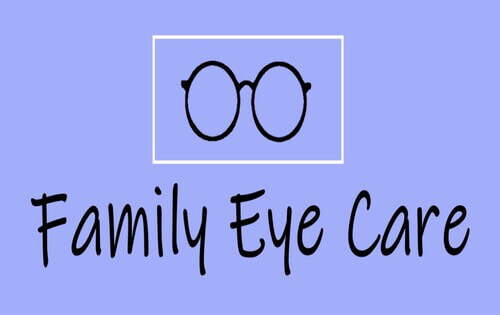The Pros and Disadvantages of Various Refractive Surgeries for Boosted Eyecare

LASIK Surgical Procedure
LASIK surgery is a frequently carried out refractive treatment that aims to remedy vision issues such as astigmatism, farsightedness, and nearsightedness. This surgical method has actually acquired appeal due to its efficiency in providing clients with clearer vision and minimizing their dependency on glasses or get in touch with lenses. Throughout the treatment, a thin flap is developed on the cornea, and a laser is utilized to reshape the underlying tissue, correcting the refractive error. The flap is after that rearranged, enabling quick healing and marginal pain for the client.
One of the main benefits of LASIK surgery is the quick enhancement in vision experienced by numerous clients. It is essential for people thinking about LASIK surgical treatment to undergo a detailed examination by an eye care specialist to figure out if they are suitable prospects for the procedure.
PRK Treatment
The PRK procedure, likewise recognized as Photorefractive Keratectomy, is a type of refractive surgical treatment that aims to remedy vision problems similar to LASIK surgical treatment. Unlike LASIK, which entails producing a flap in the cornea, PRK works on the surface layer of the cornea.
Among the benefits of PRK over LASIK is that it gets rid of the threat of flap-related complications because no flap is produced during the surgery. This can be advantageous for individuals with thin corneas or those included in contact sporting activities where eye injury is a possibility. Nevertheless, the recuperation time for PRK is commonly much longer contrasted to LASIK, as the external layer of the cornea requires time to regrow after the procedure. Despite the longer recuperation duration, PRK can be an ideal choice for individuals seeking vision correction surgery.
SMILE Surgery
A sophisticated refractive surgical procedure method gaining appeal in the field of ophthalmology is SMILE Surgery. Tiny Cut Lenticule Removal (SMILE) is a minimally invasive procedure that corrects vision by improving the cornea using a femtosecond laser. Unlike typical LASIK surgical treatment, SMILE Surgery involves producing a small cut in the cornea to remove a lenticule, which results in less interruption to the corneal structure and potentially much faster healing times.
Among the key advantages of SMILE Surgery is its capability to treat myopia (nearsightedness) and astigmatism with high accuracy, causing superb aesthetic results for clients. The minimally intrusive nature of the treatment likewise decreases the threat of issues such as dry eye disorder, making it a positive option for people seeking refractive surgical treatment.

LASEK Method
Having actually discovered the benefits and factors to consider of SMILE Surgery, one more notable refractive surgery strategy worth taking a look at is the LASEK Technique. LASEK, which represents Laser-Assisted Subepithelial Keratectomy, is a type of laser eye surgical procedure that aims to remedy refractive errors such as myopia (nearsightedness), hyperopia (farsightedness), and astigmatism.
Unlike LASIK, LASEK does not involve developing a corneal flap. Instead, throughout a LASEK procedure, the surgeon utilizes a watered down alcohol option to loosen the thin external layer of the cornea, called the epithelium. This layer is after that gently moved apart to allow the laser to reshape the underlying corneal tissue. As soon as the cornea has actually been improved to the preferred degree, the epithelial layer is repositioned.
One of the primary benefits of LASEK is that it can be ideal for people with slim corneas who might not be good prospects for LASIK. In addition, LASEK typically causes marginal post-operative pain and a quicker recuperation time compared to PRK. The aesthetic recovery process with LASEK might be a little longer than with LASIK.
Implantable Call Lenses
Implantable Get in touch with Lenses use a long-lasting vision improvement option for individuals seeking a choice to typical get in touch with lenses or glasses. These lenses, likewise called phakic intraocular lenses, are surgically inserted into the eye to fix refractive errors such as nearsightedness (nearsightedness), hyperopia (farsightedness), and astigmatism. cardiologist andalusia. Unlike typical call lenses that rest on the surface of the eye, implantable get in touch with lenses function within the eye itself, providing clear vision without the need for everyday maintenance or removal
One of the vital benefits of implantable contact lenses is their permanence. Once put, they can continue to be in the eye forever, supplying secure and constant vision adjustment. In addition, these lenses can be a superb alternative for individuals that are read more not excellent prospects for laser eye surgery or that choose a reversible vision improvement procedure.
Nevertheless, implantable get in touch with lenses do carry some dangers, including the capacity for cataracts or raised eye stress. It is important for people considering this option to talk to an eye care professional to establish if implantable get in touch with lenses are the best option for their specific requirements and eye health.
Conclusion
In conclusion, each type of refractive surgical procedure has its very own benefits and disadvantages. LASIK surgical procedure is preferred for its fast recovery time, while PRK treatment may be suitable for clients with thin corneas.

Generally, SMILE Surgical treatment offers a promising choice for find more information individuals looking to improve their vision via refractive surgical procedure.